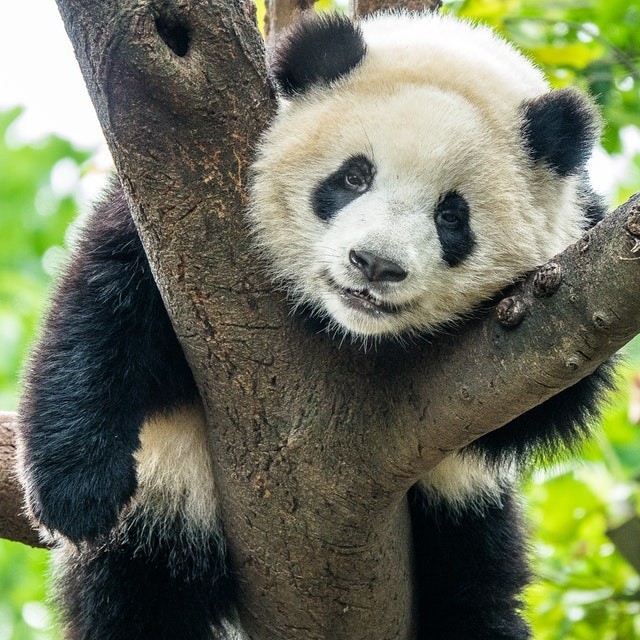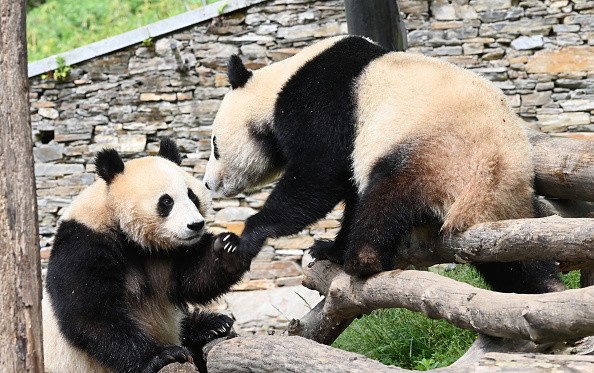Panda species just discovered, maybe the last of its type in Europe. In reality, the fossilized teeth discovered in the 1970s belonged to a new, sizable near cousin of the contemporary giant panda.

Ancient Panda
Scientists have discovered a new panda species, which they claim is the last known and "most developed" European giant panda. It is believed to have lumbered across the wooded marshes of Bulgaria some six million years ago.
Two fossilized teeth discovered in the Bulgarian National Museum of Natural History depths in the late 1970s in eastern Europe offer fresh proof of a big cousin of the present giant panda. But unlike today's famous black and white bear, it did not only eat bamboo.
Professor Nikolai Spassov of the Museum says, "Although not a direct progenitor of the contemporary genus of the giant panda, it is its near relative." The surprising results were just published in the peer-reviewed Journal of Vertebrate Paleontology.
Creating More Questions
This revelation underscores how little we still understand about prehistoric nature and how recent discoveries in paleontology may still produce unexpected outcomes.
When they were discovered in northwest Bulgaria, paleontologist Ivan Nikolov donated the upper canine and the upper carnassial teeth to the museum's collection of preserved artifacts. In his honor, this new species is given the name Agriarctos nikolovi.
Professor Spassov recalls that only one label was present. "It took me a long time to identify the location and date of the object. Additionally, it took me a while to realize that this was an unknown big panda fossil.
The teeth were discovered among coal deposits, which have given them a dark color, indicating that the ancient panda lived in wooded, marshy areas.
It probably had a mostly vegetarian diet there throughout the Miocene era; however, it wasn't entirely dependent on bamboo!
In the European - and particularly in the Bulgarian late Miocene - fossil record, fossils of the staple grass that the current panda eats are few, and the cusps of the teeth do not look powerful enough to shatter the woody stems.
It most likely consumed softer plant components, which would be consistent with the evolutionary tendency of this group toward more reliance on plants.
Giant Panda Lineage

The giant panda lineage most likely adopted vegetarianism due to its coexistence with other massive predators in its habitat.
The tighter food specialization of giant pandas to vegetable food in humid forest circumstances is explained by "the anticipated rivalry with other species, mainly predators and perhaps other bears," claims Professor Spassov.
The article hypothesizes that A. Nevertheless, nikolovi's fangs provide sufficient protection against predators. Additionally, the size of the canines is identical to that of a modern panda, indicating that they belonged to an animal that was the same size or only slightly smaller.
The authors advocate for A. Because of the "Messinian salinity crisis," which occurred when the Mediterranean basin dried up and dramatically altered the surrounding terrestrial habitats, nikolovi may have gone extinct due to climate change.
Professor Spassov continues, "Giant pandas are a particularly specialized group of animals. Although A. While prehistoric pandas were sufficiently specialized, and their evolution was linked to moist, forested environments, niklovi was not as specialized in habitats and diet as the present giant panda. The last European panda's existence was probably negatively impacted by the aridification that resulted from a climatic change in southern Europe towards the end of the Miocene.
The identification of this odd animal as a member of the Ailuropodini tribe of the Ursidae bear family was largely made possible by co-author Qigao Jiangzuo of Peking University in China.
Studying the Family
Although the giant panda, the only member of this species now alive, is well recognized for it, they originally roamed throughout Asia and Europe. Intriguingly, the authors suggest two different distributional routes for this group.
The Ailuropodini may have followed an evolutionary path that started in Asia and ended in A. in Europe, nikolovi.
According to paleontological evidence, the earliest bears in this group were discovered in Europe, to which Professor Spassov adds a note of caution.
Considering that the ancestors of another genus, Ailurarctos, formed in Asia, it is possible that the group originated in Europe before migrating there. -Ailuropoda may have sprung from these early pandas, the contemporary giant panda.
Related Article : Pandas Are Now Off Endangered Species List, But They're Still Not Safe From Threats
For more wildlife news, don't forget to follow Nature World News!
© 2025 NatureWorldNews.com All rights reserved. Do not reproduce without permission.




